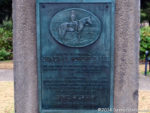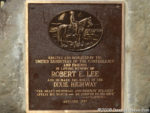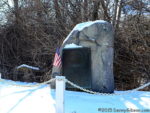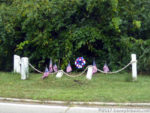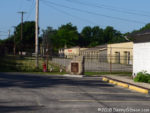I’m embarrassed. After publishing an almost identical article for seven years, I dropped the ball in 2021. I was a little busier than usual in the weeks preceding the election so that may be partly to blame. The 2021 elections were rather low-profile contests, especially compared to 2020, so that could be part of the reason too. Or maybe all those people still trying to affect the results of the 2020 elections hid the fact that a new election season was upon us. Well, there’s no hiding that the 2022 election season is now REALLY upon us even as people are still trying to affect the election of 2020 and it’s starting to seem like campaigning is not a seasonal thing at all but a permanent condition.
The economy and abortion are understandably major issues in this election but neither is, in my opinion, the defining issue. When I made my first pre-election post in 2014, my concern was the scary percentage of Americans who were able to vote but did not. The post cited some historic steps in increasing the number of Americans able to vote. Today the direction those two items are moving seems to have reversed. The percentage of eligible voters voting has increased but so have efforts to reduce the number of eligible voters. In addition, all the tricks, such as gerrymandering, to reduce the effectiveness of some votes, are at least as common as ever. It’s natural, of course, for politicians to be concerned with winning but they shouldn’t be concerned only with winning.
“Winning isn’t everything; it’s the only thing,” is a quote attributed to more than one sports figure and often the more cynical among us pretend that it’s true. But even in professional sports, most of us want the winning to be done fairly. We do not, for example, allow the winner of the World Series to unilaterally make the rules for the next season. We should be at least as concerned with fairness in selecting who represents us in our government as in declaring game winners.
There have always been politicians to whom winning is more important than any principles they might hold but their numbers seem to have dramatically increased in recent years. That increase is at least partially behind a recent Adam Kinzinger quote I’ve been thinking about a lot. Adam and Liz Cheney, neither of which will return to congress next year, are the only Republicans on the House Select Committee to Investigate the January 6th Attack on the U.S. Capitol. When his response to the attack on Paul Pelosi was compared to some others he said, “By the way, Liz and I are not courageous. There’s no strength in this. We’re just surrounded by cowards. And then complete contrast to cowardism, it looks like courage when it’s just your bare duty.”
 We fought a war to get this country going then gave every land-owning white male above the age of twenty-one the right to vote. A little more than fourscore years later, we fought a war with ourselves that cleared the way for non-whites to vote. Several decades of loud, disruptive, and sometimes dangerous behavior brought the granting of that same right to non-males a half-century later, and another half-century saw the voting age lowered to eighteen after a decade or so of protests and demonstrations.
We fought a war to get this country going then gave every land-owning white male above the age of twenty-one the right to vote. A little more than fourscore years later, we fought a war with ourselves that cleared the way for non-whites to vote. Several decades of loud, disruptive, and sometimes dangerous behavior brought the granting of that same right to non-males a half-century later, and another half-century saw the voting age lowered to eighteen after a decade or so of protests and demonstrations.
 Of course, putting something in a constitution does not automatically make it a practice throughout the land and I am painfully aware that resistance followed each of those changes and that efforts to make voting extremely difficult for “the other side” are ongoing today. I don’t want to ignore partisan obstructions and system flaws but neither do I want to get hung up on them. I meant my first paragraph to be a reminder that a hell of a lot of effort, property, and lives have gone into providing an opportunity to vote to a hell of a lot of people. Far too many of those opportunities go unused.
Of course, putting something in a constitution does not automatically make it a practice throughout the land and I am painfully aware that resistance followed each of those changes and that efforts to make voting extremely difficult for “the other side” are ongoing today. I don’t want to ignore partisan obstructions and system flaws but neither do I want to get hung up on them. I meant my first paragraph to be a reminder that a hell of a lot of effort, property, and lives have gone into providing an opportunity to vote to a hell of a lot of people. Far too many of those opportunities go unused.
We may be getting slightly better, however. 2018 turnout set a record for midterm elections as reported in this Vox article. According to this Pew Research article, turnout was even better in 2020 although the United States continues to trail most of the world’s democracies. It was in the 2020 version of the Pew Research article that I noticed something that I simply hadn’t realized previously. The United States has the greatest difference between the percentage of voting-age population (VAP) actually voting and registered voters actually voting. In many countries, there is no difference at all since to be a citizen is to be allowed to vote. In other countries, the difference is trivial. In the U.S. presidential election of 2016, it was a whopping 31.1% (86.8-55.7). It was even a little bigger in 2020 at 31.3% (94.1 – 62.8). In 2020, I found that startling so I guess I can’t be startled by it again. However, I can be and am dismayed. The problem does not seem to be getting registered voters to the polls; 94.1% is an impressive turnout. The problem is getting people registered. That’s sinking in very slowly.
 I first posted the core of this article in 2014. In the original title, I claimed to not care how anyone votes. That was never entirely true, of course. I have my favorite candidates and issues. I’ll be disappointed in anyone who votes differently than I do but not nearly as disappointed as I’ll be in anyone who doesn’t vote at all. I’m reminded of parents working on getting their kids to clean their plates with lines like, “There are hungry children in China who would love to have your green beans.” I’m not sure what the demand for leftover beans is in Beijing these days but I’m pretty sure some folks there would like to have our access to ballots and voting booths.
I first posted the core of this article in 2014. In the original title, I claimed to not care how anyone votes. That was never entirely true, of course. I have my favorite candidates and issues. I’ll be disappointed in anyone who votes differently than I do but not nearly as disappointed as I’ll be in anyone who doesn’t vote at all. I’m reminded of parents working on getting their kids to clean their plates with lines like, “There are hungry children in China who would love to have your green beans.” I’m not sure what the demand for leftover beans is in Beijing these days but I’m pretty sure some folks there would like to have our access to ballots and voting booths.

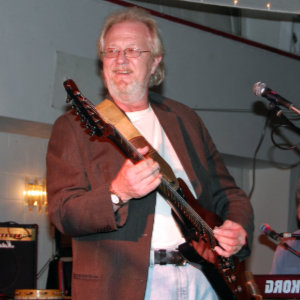 I know it’s a sign of a desperate search to find something nice to say, but I’ll say it anyway: 2020 makes 2021 look good. But COVID-19 continued to impact our lives greatly and to end far too many of them. In the U.S., deaths attributed to the virus in 2021 actually exceeded those of 2020 and the total has passed 800,000. Worldwide, that number is near 5.5 million. The United States has already passed its death count for the 1918 flu pandemic (675.000) while the worldwide count has a long way to go to hit the most conservative estimates for 1918 (12 million). Explain that to yourselves as best you can. My personal trip count doubled (from 2 to 4) and days of travel tried to do so (30 to 51). Two of the 2021 trip journals made the top five as did the blog entry for one of them. The most visited new blog post was one remembering Larry Goshorn who died in September.
I know it’s a sign of a desperate search to find something nice to say, but I’ll say it anyway: 2020 makes 2021 look good. But COVID-19 continued to impact our lives greatly and to end far too many of them. In the U.S., deaths attributed to the virus in 2021 actually exceeded those of 2020 and the total has passed 800,000. Worldwide, that number is near 5.5 million. The United States has already passed its death count for the 1918 flu pandemic (675.000) while the worldwide count has a long way to go to hit the most conservative estimates for 1918 (12 million). Explain that to yourselves as best you can. My personal trip count doubled (from 2 to 4) and days of travel tried to do so (30 to 51). Two of the 2021 trip journals made the top five as did the blog entry for one of them. The most visited new blog post was one remembering Larry Goshorn who died in September.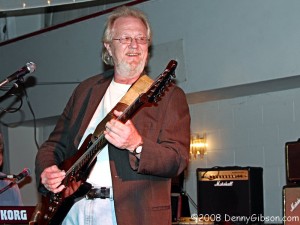



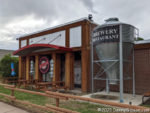

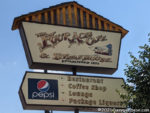

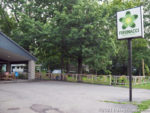

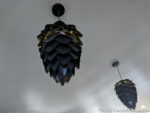
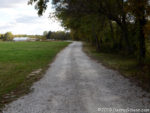


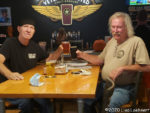




 It might be nice if 2020, like Dracula, simply did not appear in mirrors — rear view or otherwise — but the truth is, we’re going to be reflecting on this strange year a lot and for a long time. In last year’s Rear View post, I lamented a drop in travel. Trips, days on the road, and pictures posted were all down, but those were the good old days. This year the counts didn’t just drop, they plummeted. I do not, of course, have to guess at the cause. It is clearly the shutdowns and precautions associated with the COVID-19 pandemic. Prior to that becoming a factor in mid-March, I had 2020 identified as a big travel year with plans for two major trips and several of medium-size. In the end, only one of the major trips and a single small trip actually took place. The top five trip journal entries were again for major trips including one repeat from last year. Neither 2020 trip made it. Only one new blog post made the top five and that was at the bottom behind four posts that were at least five years old.
It might be nice if 2020, like Dracula, simply did not appear in mirrors — rear view or otherwise — but the truth is, we’re going to be reflecting on this strange year a lot and for a long time. In last year’s Rear View post, I lamented a drop in travel. Trips, days on the road, and pictures posted were all down, but those were the good old days. This year the counts didn’t just drop, they plummeted. I do not, of course, have to guess at the cause. It is clearly the shutdowns and precautions associated with the COVID-19 pandemic. Prior to that becoming a factor in mid-March, I had 2020 identified as a big travel year with plans for two major trips and several of medium-size. In the end, only one of the major trips and a single small trip actually took place. The top five trip journal entries were again for major trips including one repeat from last year. Neither 2020 trip made it. Only one new blog post made the top five and that was at the bottom behind four posts that were at least five years old. I really don’t like writing things that make others look bad and no one likes writing things that make themselves look foolish. Today I’m doing both.
I really don’t like writing things that make others look bad and no one likes writing things that make themselves look foolish. Today I’m doing both.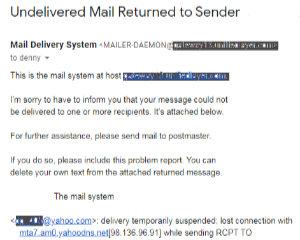 It’s terribly inconvenient, of course, but is usually solvable in a reasonable amount of time. Many blacklists are public with established procedures for getting off of them after proving the bad guy is gone. That’s not the case with Yahoo. Nor is it now the case with AOL and Verizon since, through purchases and mergers, they’re all one happy and secretive family. Their lists are essentially private and getting removed from them (i.e., restoring your reputation) is not very easy. I’m sure that knowing that made me more tolerant as weeks then months slid by with no resolution.
It’s terribly inconvenient, of course, but is usually solvable in a reasonable amount of time. Many blacklists are public with established procedures for getting off of them after proving the bad guy is gone. That’s not the case with Yahoo. Nor is it now the case with AOL and Verizon since, through purchases and mergers, they’re all one happy and secretive family. Their lists are essentially private and getting removed from them (i.e., restoring your reputation) is not very easy. I’m sure that knowing that made me more tolerant as weeks then months slid by with no resolution.
 Back in December, I was unfriended on Facebook for what I believe to be the first time. I can now add being blocked to my list of Facebook experiences. On the occasion of the unfriending,
Back in December, I was unfriended on Facebook for what I believe to be the first time. I can now add being blocked to my list of Facebook experiences. On the occasion of the unfriending,  I’ll admit that the guy was kind of fun to watch and in some odd way, I might even miss his strings of commas and other “creative” bits of punctuation now and then. But in my heart, I know this breakup was for the best. I’ve never unfriended or blocked anyone, but during the leadup to the 2016 election, I did temporarily stop following some people. I suspect I’ll have to do that again in the next few months. Unless, of course, some more trash takes itself out.
I’ll admit that the guy was kind of fun to watch and in some odd way, I might even miss his strings of commas and other “creative” bits of punctuation now and then. But in my heart, I know this breakup was for the best. I’ve never unfriended or blocked anyone, but during the leadup to the 2016 election, I did temporarily stop following some people. I suspect I’ll have to do that again in the next few months. Unless, of course, some more trash takes itself out. Seeing things like signs, banners, and menus for local businesses bearing the logo of some large corporation is quite common. Details vary but the basic model is that the big corporation shoulders some or all of the cost and the small business gets some advertising for little or nothing. The idea is hardly new and the concept has never been restricted to purely commercial enterprises. During the last half of the 1920s, a pairing of this sort existed between a major highway and an American hereditary association. The major highway was, of course, the Dixie Highway. The hereditary association was the
Seeing things like signs, banners, and menus for local businesses bearing the logo of some large corporation is quite common. Details vary but the basic model is that the big corporation shoulders some or all of the cost and the small business gets some advertising for little or nothing. The idea is hardly new and the concept has never been restricted to purely commercial enterprises. During the last half of the 1920s, a pairing of this sort existed between a major highway and an American hereditary association. The major highway was, of course, the Dixie Highway. The hereditary association was the  The UDC was the “advertiser” in this instance. Between 1926 and 1935 the organization was responsible for at least ten plaques being erected beside the highway. It’s unclear whether or not the Dixie Highway Association was an active participant in this arrangement. Because the 1926 creation of the United States Numbered Highway System brought an end to all of the named auto trails, the DHA was not very active at this point.
The UDC was the “advertiser” in this instance. Between 1926 and 1935 the organization was responsible for at least ten plaques being erected beside the highway. It’s unclear whether or not the Dixie Highway Association was an active participant in this arrangement. Because the 1926 creation of the United States Numbered Highway System brought an end to all of the named auto trails, the DHA was not very active at this point. Combined, the previous picture and the one at right show the ten plaques in north to south sequence. The northernmost marker is in Ohio, the southernmost is in Florida, the one preceding it is in South Carolina, and the others are in North Carolina. Except for the date erected, eight of the plaques are identical. The one in Florida contains the same text as those eight but has a different image of Lee. The one in South Carolina contains different text but has the same image as the bulk of the plaques.
Combined, the previous picture and the one at right show the ten plaques in north to south sequence. The northernmost marker is in Ohio, the southernmost is in Florida, the one preceding it is in South Carolina, and the others are in North Carolina. Except for the date erected, eight of the plaques are identical. The one in Florida contains the same text as those eight but has a different image of Lee. The one in South Carolina contains different text but has the same image as the bulk of the plaques.